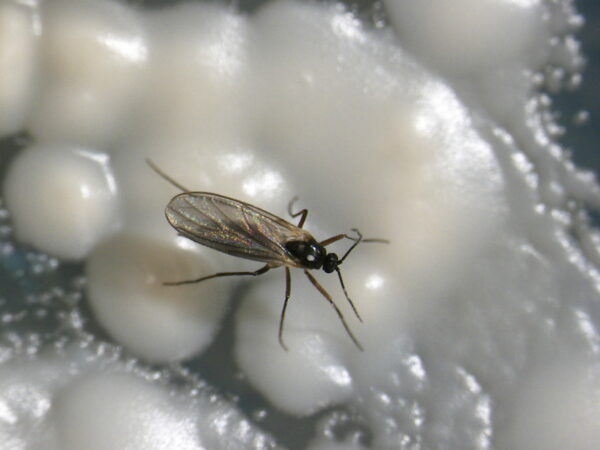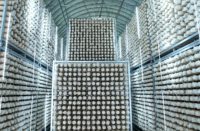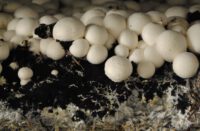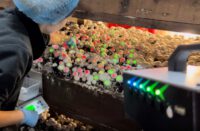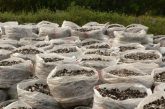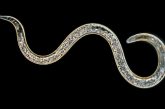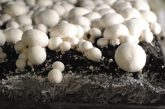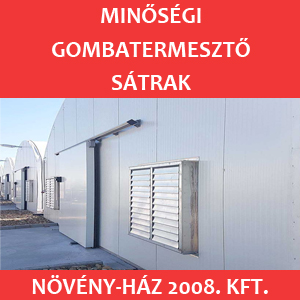The fungus gnats of the diptera order are considered the most dangerous pests in mushroom cultivation. Researchers from the ELKH Centre of Ecological Research (ÖK), the ELKH Centre for Agricultiural Research (ATK) and the Hungarian University of Agriculture and Live Sciences have investigated the effects of different wavelengths of light on the behaviour of fungus gnats. The aim of the study is to develop effective light trapping methods to protect cultivated mushroom crops. A paper summarising the results has been published in the journal Scientific Reports.
According to a press release from the Eötvös Loránd Research Network (ELKH), fungus gnats are generally considered a marginal pest in agriculture, and their damage can become significant when they multiply in very large numbers. In mushroom production, these tiny, black-coloured, fragile flying insects can cause extremely high damage.
Since the most important environmental condition for the development of fungus gnats is a moist, humid habitat, mushroom cultivation provides them with an ideal habitat, even all year round. The adult insects carry vectors of various fungal and bacterial diseases within the growing house, while the larvae damage the fruiting bodies of the mushrooms. Therefore, not only in Hungary, but everywhere in the world, we have to fight against fungus gnats.
“As a result of the unilateral use of pesticides, resistant and tolerant populations have long appeared abroad, so chemical products no longer always provide adequate protection against pests,” – said Sándor Kecskeméti, research assistant at the ATK.
In Hungary, there are no conventional chemical products approved for use in various crops, and no new products are expected to appear. As the rapid development of cultivated mushrooms is difficult to reconcile with the food safety waiting time of pesticides, nematodes are used in Hungary to control fungus gnats in cultivation. However, the problem is that these products do not provide complete protection.
So growers are using agrotechnical solutions to control pests, such as placing yellow sticky tabs or adhesive strips at appropriate points in the growing house, and placing ultraviolet light traps in aisles and growing rooms.
The European Union wants to reduce the amount of pesticides applied by fifty percent by 2030, and to this end, the development of alternative, chemical-free control methods in agriculture must be encouraged. While growers use ultraviolet light traps, it has not been tested whether the radiation emitted by these traps is effective or whether there are other spectral ranges that are more effective in attracting fungus gnats.
The researchers have now investigated the spectral sensitivity and wavelength dependence of the attraction to light of one of the most common fungus gnats (Lycoriella ingenua).
“We have investigated in detail how the attraction of the fungus gnat to light depends on the wavelength and intensity of the light, and we have found the interesting result that the wavelength dependence of the attraction is intensity dependent: at very low light intensities the green spectral range is the most attractive, while at higher light intensities the ultraviolet range is the most attractive,” explained Ádám Egri, a research fellow at ÖK.
According to the results of a recent study, it makes sense to use traps in grow houses that emit in the green spectral range in addition to the ultraviolet. The researchers hope to develop a more effective trap to help mushroom growers control fungus gnats.
Publication:
Kecskeméti, S., Geösel, A., Fail, J., Egri, Á. (2021) In search of the spectral composition of an effective light trap for the mushroom pest Lycoriella ingenua (Diptera: Sciaridae). Scientific Reports 11, 12770.
Source: MTI


